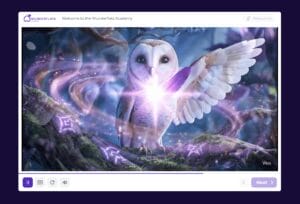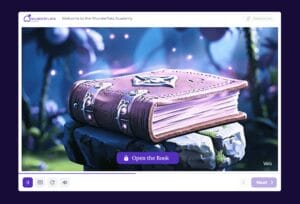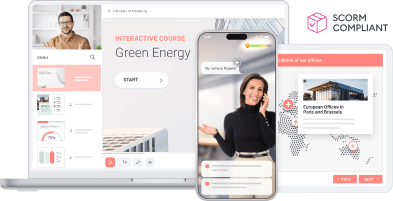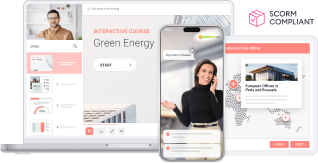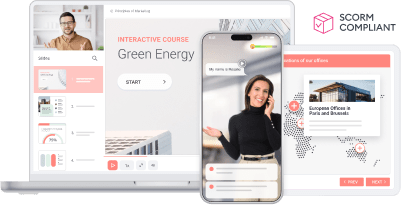iSpring helps me save time, increase efficiency, and expand training reach
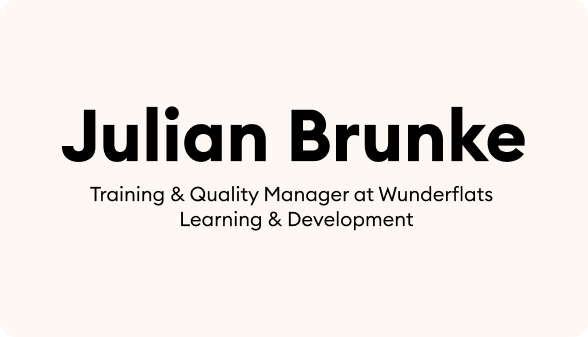
With a strong foundation in customer support and quality management, Julian Brunke has built a career around helping people learn, adapt, and perform at their best.
His practical, learner-first approach quickly caught the L&D community’s attention — he won 1st place in the iSpring Course Creation Contest (Winter Edition) for his outstanding course design. And just a few months later, Julian returned to the iSpring community as a mentor for the Summer Contest.
Background

Julian Brunke, Training and Quality Manager at Wunderflats
Julian began his career in customer service, moving from frontline support to training and quality management at Wunderflats, a Berlin-based housing platform.
This experience shaped his understanding of how structured learning can improve both performance and the customer experience. At Wunderflats, Julian now leads onboarding and quality programs that help Customer Operations deliver consistent, human-centered service.
In this interview, Julian shares how a passion for helping others learn led him from customer service to managing strategic learning programs — and how he now uses iSpring LMS, AI, storytelling, and community power to make training truly engaging and impactful.
What is the biggest challenge you face as an instructional designer and learning development manager?
At Wunderflats, we focus on growing in a healthy and sustainable manner, and learning plays a key role in this process. My biggest challenge, and also my motivation, is to make the impact of learning visible in everyday business results.
The value of good training often shows over time, so my goal is to connect those long-term benefits with what teams need right now.
Before designing any program, I define clear, measurable objectives for what it should achieve.
This helps us demonstrate that learning at Wunderflats isn’t just about onboarding; it’s about empowering every team to perform at its best and continue to grow. Ultimately, Learning and Development is a proactive partner that drives both individual and company success.
When you expand your learning program, how do you generate buy-in from those who will be participating in it?
My approach to generating buy-in focuses on three key areas:
- Making the content relevant
- Showing the personal benefit for each learner
- Involving them in the process
First, the content must be relevant to the learner
I make sure our courses are tailored to the employees’ actual needs and don’t waste their time with information they don’t need in their daily work.
For courses with different target groups, I like to use tools like branching scenarios within a course to create different paths. This way, everyone gets the version that’s right for their specific role.
Next, it’s crucial to show learners how the training will help them
It’s not enough to just announce a new course. We need to explain exactly how it will help them succeed in their roles.
For example: “This training will help you improve the following KPIs,” or “This will make you more effective in handling customer requests.”
When learners see a direct link between the training and their daily work and success in their role, they are much more motivated.
Finally, I involve the learners in the creation process
I often ask for volunteers to be part of a pilot group to test new courses and provide feedback.
This not only helps me improve the final course and make it relevant for the learner, but it also turns these participants into champions for the new course. When they tell their colleagues, “This new course is really helpful,” that peer-to-peer recommendation is more powerful than any announcement.
How do you establish positive momentum with new implementations and keep it going with existing learning programs?
That’s a great question because we put a lot of thought into exactly that. Our approach has two distinct phases:
Establishing momentum: teasers, a mascot, and storytelling
To establish momentum, we treated the launch of our LMS, our ‘Company Academy,’ like a marketing campaign:
- Before the launch, we ran a teaser campaign with images and messages like “A new way for learning and growth,” all pointing to a specific launch date.
- The launch itself then included a story.
- We introduced a unique mascot for the academy, and our first course was a high-quality, storytelling-based experience.
The result was that engagement from day one was extremely high. We generated a lot of curiosity and excitement, and positive feedback came in organically.

To keep momentum: relevance, gamification, feedback
Now, to keep that momentum going, our strategy is built on consistency and relevance:
- We continue to use our mascot in regular communications, like our weekly “Learning Tuesday” updates, which creates a strong and recognizable brand.
- We’re also driving engagement through gamification with leaderboards and by actively collecting feedback, allowing people to request topics so they feel that they’re part of the academy’s evolution.
- But our most important strategy is creating highly relevant content. We are focused on launching new courses that solve real everyday problems for our employees.
When teams notice that a course makes their daily work easier or more effective, they naturally stay engaged. It’s the best way to make learning part of our everyday growth culture.

What is one thing you would tell your younger self about instructional design or learning development?
Oh, the first thing would probably be, “Hey, that thing you’re doing is called Learning and Development!”
I stumbled into the L&D world, almost by accident. It started when I took over onboarding in our Customer Support team. At that time, there wasn’t a proper structure in place, so I began building it from scratch with live training.
From there, I introduced quality management in our operations department and connected it with a more strategic learning approach. Eventually, I discovered instructional design and rolled out our first LMS.
Just knowing the terms ‘Instructional Design’ and ‘L&D’ earlier would have been a game-changer. I would have found amazing online communities, like the iSpring learning Exchange on LinkedIn, or exciting opportunities, like the course creation contest, so much sooner.
It would have unlocked the right books that helped me to grow, the right courses and online resources, and the right connections much faster.
And that leads to the second thing I’d tell my younger self:
Actively participate in those communities. Network, share your experiences, and ask questions.
The moment I started doing that, it opened up a world of new opportunities, fascinating contacts, and insights that have pushed me much further.
Actually, that advice I don’t just give to my younger self but to my current self, too. I’ve seen how rewarding it can be, and I know there is still room to grow and participate in those communities even more.
What insights would you like to share regarding your day-to-day operations that others may find surprising?
I think a surprising insight is the fundamental mindset required for this role, of being a “performance detective” first and a course creator second.
Finding the root cause
It’s easy to assume that if there’s a business challenge or update, training is automatically the solution. But I believe the most crucial first step is to investigate the root cause of the challenge.
This investigation might lead to the surprising conclusion that the most effective solution isn’t a course at all, but a change in a process or a simple job aid.
My goal is to always propose the right solution to a problem, not just to produce content on request.
Then, if that detective work shows that a course is the right path, the second core principle comes into play: designing specifically for adult learners at work.
Designing for adult learners at work
This is completely different from the classic school model of learning. The entire creative process must focus on connecting learning to practice and answering the question, “How will this help me in my job?”
But perhaps the most fulfilling and surprising insight of all is the human element:
When you see an employee who was initially struggling or unsure suddenly gain confidence and become a successful, high-performing member of the team, that’s the real “why” behind all of it.
To be effective in this role, you must be a constant learner yourself. And there is nothing more rewarding than seeing that translate into the growth of others. Being able to help others grow and see them succeed is extremely fulfilling.
What methods have you used in the past to overcome obstacles in managing learning programs?
The biggest obstacle in any learning program isn’t budget or technology; it’s employee attention and engagement. People are busy, and the default assumption often is, “I don’t have time for this.” So, the obstacle we needed to overcome was potential indifference.
My method of tackling this was to treat the implementation not as an administrative rollout, but as an internal product launch.
Instead of just sending an email saying, “Here is the new tool,” we built a small marketing campaign around it. We created curiosity with a teaser campaign, we gave our ‘Company Academy’ a strong brand with a unique mascot, and we made sure the very first piece of content was an engaging, story-driven experience.
This method overcomes the obstacle by shifting the dynamic:
We didn’t just push information out. We created a pull by making people curious and showing them from day one that learning can be exciting and valuable.
It turned a potential “have to do” task into a “want to check out” opportunity.
How are you using or how are you planning to use elements of AI to aid your learning program?
It’s incredible to see how quickly AI has evolved and how it’s opening up new possibilities to elevate course design. I’ve embraced it in my work, and my use of AI has changed significantly over the past 1-2 years.
On writing and winning with AI
Initially, I used AI mostly as a creative partner for writing. For example, in my course for last year’s iSpring Contest, “A Journey Through the History of Customer Service,” the concept was a fun, adventurous time-travel story.
AI was a huge help in refining all the text — from the slide content to the narration scripts and quiz questions — to maintain a consistent, humorous tone. It helped me structure my ideas and make the content clear and engaging.
Since I was new to the authoring tool back then, I also found the iSpring Suite AI Assistant very helpful for getting ideas on how to technically build some of the features I had in mind.
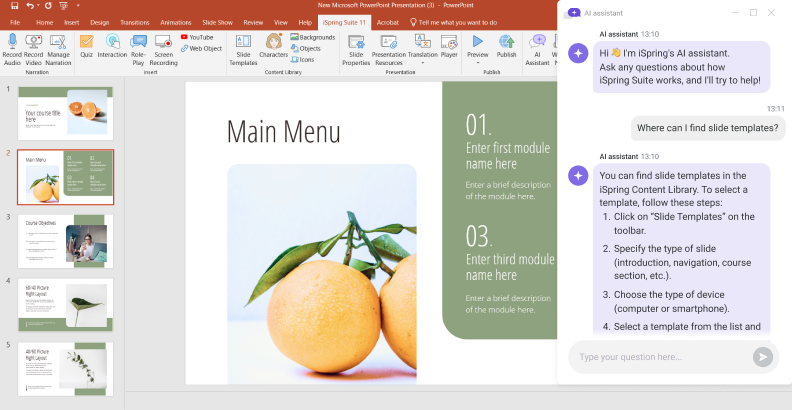
But over the last year, the progress in AI image and video generation has been a complete game-changer.
On image generation with AI
For a new course introducing our company academy, I was able to create a much richer, visual story. I generated a custom character — an owl in our company colors — and AI allowed me to keep that character perfectly consistent across many different poses. Consistent characters with transparent backgrounds have been the biggest challenge with AI image generators before.

The real highlight, however, was the intro video. Using Google’s Veo 3, I created a fully animated, cinematic opening sequence that brought the owl character to life, complete with narration and music. It creates a true “goosebumps” moment that immediately immerses learners in the story from the very first second.
For me, this is the future. AI is breaking down creative and technical barriers, allowing us to build more immersive and visually compelling learning experiences than ever before — even for someone who isn’t a professional graphic designer.
What has been your biggest success since implementing iSpring LMS?
We’re still expanding our LMS content, but our biggest success so far has been the significant increase in efficiency and reach.
One of our main goals with the LMS was to reduce repetitive live training and make knowledge accessible anytime. While creating an online course takes some upfront effort, the investment pays off quickly. We now save significant time and ensure that everyone receives the same high-quality training.
The best part is the scalability. For example, the training we created for our Operations team can now be instantly assigned to other departments with zero additional effort.
We are now reaching employees from other departments that we simply had no capacity to train before.
And we’re already seeing results — even at this early stage. There’s a noticeable improvement in the general knowledge level across teams, and it’s clear that our new hires are integrating faster because they understand not just the tasks but also our way of working.
How has using an LMS benefited you and your organization?
The benefits have been clear on three levels: for the organization, for our employees, and for my role.
Benefits for the organization
For the organization, the LMS provides a central “source of truth” for knowledge. It ensures consistency and makes learning scalable — something that’s essential for growing in a healthy and sustainable way. It also gives us valuable insights into which training is most effective and where we can keep improving.
Benefits for employees
For our employees, the biggest benefit is flexibility and empowerment. They can learn at their own pace, at a time that fits into their schedule. It gives them the autonomy to find the information they need, exactly when they need it.
Benefits for the L&D manager
For me and my team, it’s about creating more space for meaningful work. By automating the distribution and tracking of learning, it frees us from repetitive administrative work and allows us to focus on what truly adds value: designing great learning experiences and supporting our teams as strategic partners in their growth.
How do you work with the toolsets you currently have to avoid burnout?
As a small team managing training and quality for diverse teams and multiple call centers, our workload was becoming unsustainable.
Much of our time used to go into repetitive manual tasks: running the same live training for every new hire, updating presentations, or manually tracking test results. This left little space for creativity and long-term development.
Implementing a unified system with iSpring Suite and iSpring LMS was our way to break that cycle.
While building a course requires an initial investment of time, we build it once, and it can then be reused for every new team member. Automated reporting and simplified user management now save us hours of administrative work each week.
What keeps us motivated is knowing that every course we build becomes a long-term asset. Each step brings us closer to a more self-sufficient learning culture where we can focus on what truly matters: supporting teams and continuously improving the learning experience.
If you want to achieve the same or even greater results, book a free consultation with an iSpring eLearning specialist to see how iSpring Suite and iSpring LMS can help you create learning experiences that deliver both immediate results and long-term value.

